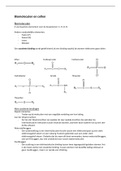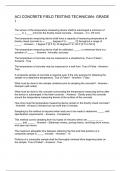English: Text and communication 3
Introductory questions
1. I expect we will learn how to analyse texts more extensively and applied to more genres or
different types of texts. I expect we will be focusing more on oral texts, for example. I think
it will also be expected from us that we can produce academically correct texts ourselves,
both in writing and in speaking, instead of mostly only analysing texts written by others.
2. My most favourite activity was analysing and interpreting books, e.g. ‘Of Mice and Men’ or
‘Extremely Loud and Incredibly Close’. My least favourite part was morphology.
3. I can produce well-written texts, if given time ahead.
4. When I have to speak instantly, I sometimes cannot seem to find the right words. The
English in my head sounds better than the English I actually produce.
5. Six
6. Five
7. I would say a six because I often use the same sentence structures and I cannot seem to
variate my writing enough. The writing component on an exam often is the most difficult
one for me.
8. I would say a seven because I often cannot seem to find the right words. The English in my
head sounds better than the English I actually produce.
9. I would mostly focus the evaluation on oral text production because I feel that we do not
get to practice that a lot. I would maybe even opt for an oral exam in combination with
some continuous assessment in the format of written text production.
10.I do not like making portfolios as part of the continuous assessment. I never seem to learn
a lot from the process of making a portfolio and I often feel that it is a waste of time.
Exploring the topic of online teaching: Questions
1. Personal experience
a. Now that we had some online teaching in the last semester, I have quite some
experience. A lot of my courses were moved online and I had online class two or three
times a week. The teachers would either record the videos ahead or give live lessons.
b. Yes, the course ‘German: Interpreting’ was not moved online and was turned into self-
study because teaching interpreting live is quite difficult. This was limiting the extent
of the learning materials that we could see, however. The level of education for the
other courses did not necessarily decline, but we did miss a couple of classes of
‘English: Translation’ because of the changed circumstances.
c. My experience was mixed. On the one hand it was convenient to be able to stay at
home and easier to take notes when listening to (pre-)recorded videos. However, now
that we had access to those recorded videos, I wanted to hear everything the
professors were saying. Therefore, I often rewound the video. That is one of the
reasons why it took me way longer than usual to go through the learning materials. I
had to work for school constantly just to keep up. Another negative thing was that one
of my German professors had an awfully bad Wi-Fi connection so that it was difficult to
take notes and to stay motivated for that course.
2. Topic awareness. I do not know of any academic research into online teaching.
3. Sources
a. I would look for peer-reviewed articles in journals. I would also take a look at the
authors and see if they are reliable and experts in the field.
b. I would look for my sources on Google Scholar Type in e.g. “online + teaching +
university” “Sinds 2020”. You can then click on “Verwante artikelen” or you can
type in a new search query.
i. Type in ‘online teaching’ on Amazon, open a book, go to the table of contents.
c. Who the authors are, if they are reliable, if the research is connected to a university or
an institution, how many times the research has been cited by others…
d. That depends on how big your project has to be and how much information you need. I
would definitely read in on the topic first to see how variated the research topics are,
e.g. skim through 10 articles and read the abstracts and key words.
, English: Text and communication 3 – 2020-2021 – UAntwerpen – J. Ureel – Toegepaste Taalkunde
e. I never thought about looking for sources in a specific order, so no. It might be a good
idea though.
Project
Evaluation
1. Portfolio: descriptive analysis of how your presentation came to be
a. Template on blackboard (do NOT change the template at all)
i. Clear structure to the template
b. Discussion: four visual components (choose one)
c. APA-compliant
2. Presentation: linked to portfolio
a. Academic presentation: general topic You need to narrow it down
b. 20 minutes (regardless of number of group members)
c. Academic PowerPoint: presenting information in an attractive way may help to make
your point clear
General topic
Broad topic Narrow it down Presenting a research question and answering that research
question in your presentation
How to start?
- Look for a book on the topic
- Look at information, look at cover of the book, then decide whether you want to continue
with the table of content; have a view at the overview of the book and look at what is
interesting to you
How to find a good overview book?
- Overview, generally in book form
- You can use database in the library of the university
- Amazon: You can click on the book and have a look in the book You can generate ideas
by looking at the contents of the book Then look for specific information about the topic
- Reference lists Getting sources immediately
Abstract
Features of a good abstract see also research skills from last year
- Coherent (quickly comprehensible): present content in an orderly & logical manner, using
active voice, past tense, and, normally, third person
- Enticing: state e.g. an interesting fact, but it must be informative Find a balance
- Focused: limited in word count Remain focused and do not add irrelevant things
- Concise & succinct: no more than 300 words (normal length is 150 words), usually in one
paragraph; use clear, significant words (usually nouns), and avoid being abstruse or
verbose
- Conventional
- Informative: provide precise details about the main elements of the research (normally
research question, method, results or findings, and main conclusions)
- Self-contained: must stand by itself without having to resort to the article for
clarification. This means no literature citations, abbreviations, acronyms, or any sort of
table, figure or diagram (or references to them).
- Accurate: do not deceive people; mention things that will be in your presentation; correct
in all details, with nothing added that was not in the paper
Conventional vs structured abstracts
Conventional Structured
- One continuous text; no subdivisions - Paragraphs: blocks of text under each
- Put sth in italics to highlight it; do not put other










